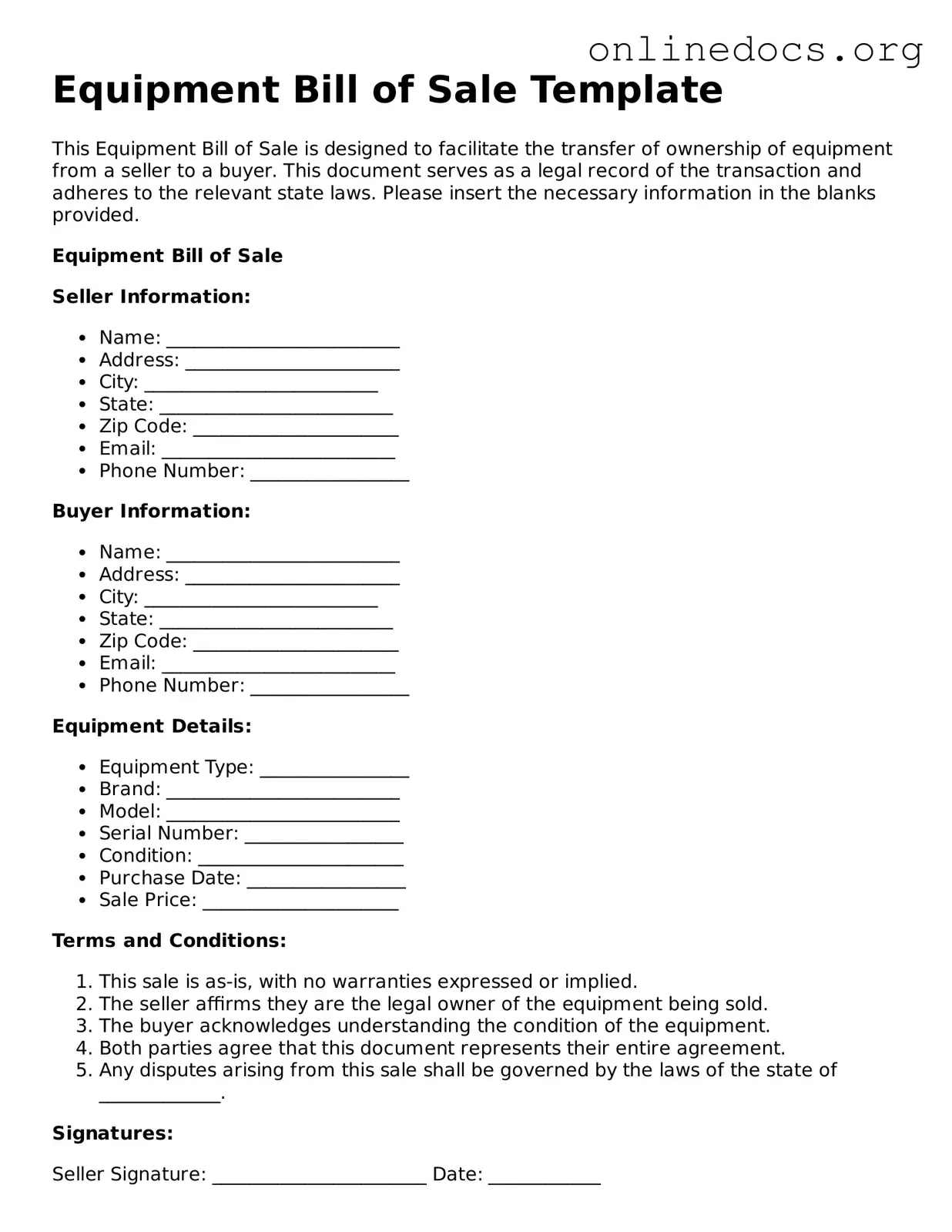The Equipment Bill of Sale is similar to a Vehicle Bill of Sale, which is used when transferring ownership of a motor vehicle. Both documents serve to officially document the sale and transfer of ownership from one party to another. They typically include details such as the buyer and seller's information, a description of the item being sold, and the sale price. Just like the Equipment Bill of Sale, the Vehicle Bill of Sale can also serve as proof of purchase and may be required for registration purposes.
Another document that resembles the Equipment Bill of Sale is the Real Estate Bill of Sale. This form is utilized when personal property within a real estate transaction is sold. It outlines the details of the property being transferred, similar to how the Equipment Bill of Sale specifies the equipment involved in the transaction. Both documents ensure that the buyer receives clear ownership rights and that the seller is protected from future claims regarding the sold items.
The Boat Bill of Sale is another document that shares similarities with the Equipment Bill of Sale. When purchasing a boat, this form is essential for transferring ownership from the seller to the buyer. Both documents include key information such as the condition of the item, identification details, and the agreed-upon sale price. They serve as proof of the transaction and may be required for registration or titling purposes.
When engaging in the sale of any item, it's crucial to utilize a Bill of Sale form to formalize the transaction and record details about the buyer and seller. For those in Colorado, you can find various templates to suit your needs, including options for vehicles, equipment, and personal property sales. To ensure you're using the correct documentation, refer to All Colorado Forms, which can guide you through the necessary requirements and forms needed to complete your sale smoothly.
In addition, the Motorcycle Bill of Sale functions in a similar manner. This document is specifically designed for the sale of motorcycles and includes pertinent details about the vehicle, such as its make, model, and VIN. Like the Equipment Bill of Sale, it provides legal protection for both the buyer and seller by documenting the terms of the sale and transferring ownership rights.
The Personal Property Bill of Sale is also comparable. This document is used for the sale of various personal items, not just equipment. It captures essential details about the transaction, including the description of the item, the sale price, and the parties involved. Both the Personal Property Bill of Sale and the Equipment Bill of Sale serve as legal proof of ownership transfer and can help resolve disputes in the future.
Another related document is the Lease Agreement. While primarily used for renting, it can include a purchase option at the end of the lease term. This agreement outlines the terms of use and payment, similar to the Equipment Bill of Sale, which details the sale of equipment. When a lease leads to ownership, having both documents can clarify the transition from leasing to purchasing.
Lastly, the Consignment Agreement shares some characteristics with the Equipment Bill of Sale. This document is used when an item is sold on behalf of another person. It outlines the terms under which the item will be sold, including the commission structure and sale price. Like the Equipment Bill of Sale, it provides a framework for the transaction, ensuring that both parties understand their rights and responsibilities.
